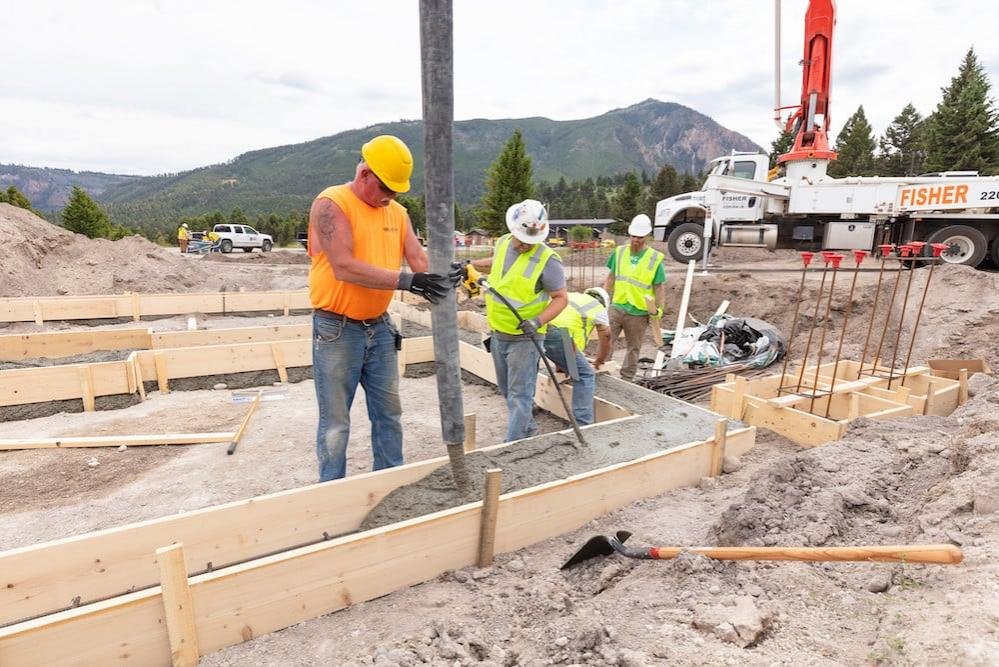Business
High Suicide Rates Spark Urgent Conversations in the ‘Tough Guy’ Construction Industry

PHOENIX – Francisco Gomez, 28, begins his five- to six-day workweek at 5 a.m., often with only a banana for breakfast. As a father of two and a fire stopper in construction for five years, Gomez acknowledges the stress of his job. “Work can be pretty stressful,” he states. “There’s just so much pressure; you feel like things are your fault and can’t do anything about it.”
Gomez’s role involves filling gaps between rooms and applying fire retardants to help prevent fires. He mentions the critical importance of his work: “If the building were to catch on fire, it pretty much gives the people about two to three hours to escape before the metal starts melting.”
Typically clocking 40 to 45 hours each week, Gomez and his colleagues receive consistent wellness checks from their employer, Alpha Insulation & Waterproofing. While the company lacks formal counselors, they encourage open dialogue. “They try to get us to express ourselves,” Gomez reports, acknowledging it can be challenging due to the stigma associated with mental health discussions.
A recent report from the Centers for Disease Control and Prevention highlights alarming suicide rates in the construction industry, noting it is one of the most affected sectors. Aaron Sussell, a CDC epidemiologist and lead author of the study, explains the classification of industries and occupations helps in understanding the risks associated with various job types. “Each company is classified based on what they do,” he explains.
Sussell points out that while “construction” is a broad category encompassing various roles, the rates of suicide in construction occupations remain significantly higher than average. He notes male workers face greater risks, often utilizing more lethal means when it comes to suicide.
Factors contributing to this risk include low educational attainment, job-related stress, and inadequate support systems. Stephanie Stevens, a spokesperson for the National Institute for Occupational Safety and Health (NIOSH), adds, “Workplaces can be vital for suicide prevention since work-related factors often correlate with these incidents.”
The culture within the construction industry contributes to mental health challenges, according to Sarah LaVetter-McCraren, general manager at McCraren Compliance. She observes that cultural attitudes about mental health may be more conservative in construction and mining sectors, where traditional notions of masculinity create barriers to discussion. “Males are often raised to believe they must be strong and invincible,” she notes.
Brian Legan, director of training and safety at the Associated Contractors of New Mexico, emphasizes the need for awareness among construction workers about their mental health. His training sessions cover strategies to foster a supportive environment and combat workplace bullying. “Once a co-worker is labeled, it’s nearly impossible to remove that stigma,” he says, recounting how individuals sometimes leave toxic environments to thrive elsewhere.
Common stressors faced by construction workers include chronic pain, strict project timelines, and the pressures of maintaining a “tough guy” persona. Despite these challenges, there is a noticeable shift in how the industry approaches mental health. Both LaVetter-McCraren and Sussell report an increasing focus on workers’ overall well-being, with many companies providing support and training.
Sidney Hawkins, a safety and mental health director at the Phoenix-based 4×5 Suicide Prevention Program, highlights a generational shift in attitudes toward mental health within the industry. He notes, “Stigmas surrounding mental health are declining, particularly among younger workers who recognize the importance of discussing these issues.”
As support increases, Hawkins points out the significance of camaraderie in construction, emphasizing that the workplace is where relationships are formed that extend beyond job sites. “You have your home family, and then you have your construction family,” he states, underscoring the bonds built over time.
For individuals struggling with suicidal thoughts, resources are available. The 988 Suicide & Crisis Lifeline can be contacted anytime at no cost. “If you or someone you know is in need, reaching out can make a difference,” Gomez adds, echoing a sentiment of solidarity among workers in the field.










![Phillip Gracia was arrested on multiple disorderly conduct charges on June 19, 2025. [PCSO/graphic]](https://arizonanews.org/wp-content/uploads/2025/06/Family-Mass-Suicide-Plot-Man-Arrested-for-Alleged-Orchestration-400x240.jpg)
![Phillip Gracia was arrested on multiple disorderly conduct charges on June 19, 2025. [PCSO/graphic]](https://arizonanews.org/wp-content/uploads/2025/06/Family-Mass-Suicide-Plot-Man-Arrested-for-Alleged-Orchestration-80x80.jpg)





